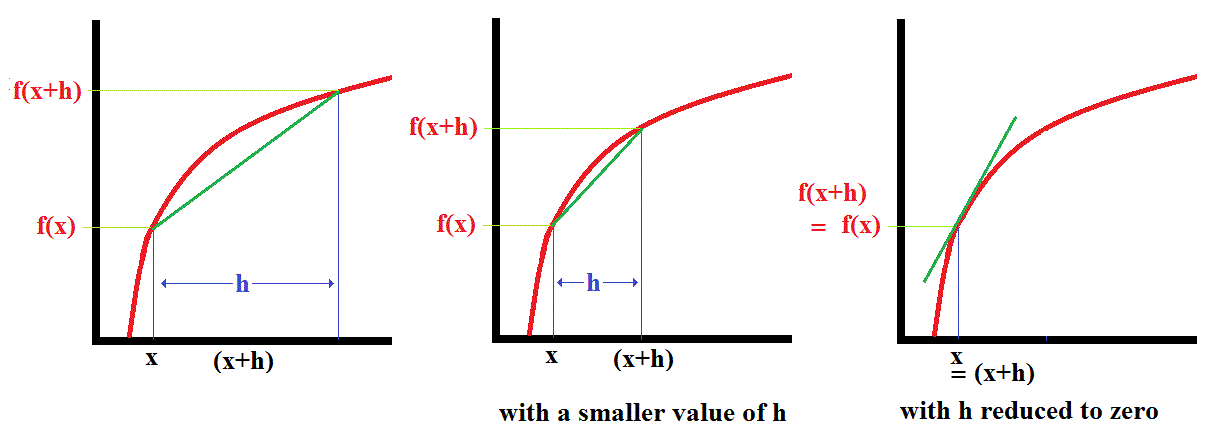What is computing derivative definition and how do you use #f(x+h)-f(x)/h#?
1 Answer
Computing the derivative (of a function at a certain point) is calculating the rate at which the function's value is changing at that point.
In the graphs below we can see how a function's value is changing between a point

The green line indicates the rate at which the function is changing as a ratio of the change in the function value divided by the difference in width between the two point locations.
This ratio is:
As the width,
This theoretical rate of change at a single point is called the derivative of the function at that point.
It can be written as
Obviously there would be problems of division by zero if
As an example of how this might be applied algebraically, suppose
then the derivative of f(x), written as
and
So we have now calculated the derivative of
If we need to know the derivative (rate of change) of
